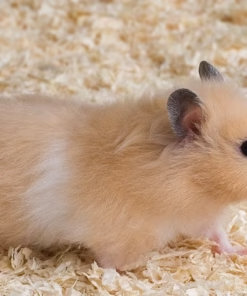Hamsters are delightful small rodents that have captivated pet owners with their adorable appearance, entertaining behaviors, and manageable care requirements. Originating from various parts of Asia and the Middle East, these pint-sized companions have become popular pets worldwide, bringing joy and companionship to countless households.
Physical Characteristics: The Endearing Features of Hamsters: Exploring Their Tiny Bodies and Unique Traits
Hamsters are characterized by their compact bodies, short legs, and rounded ears. They typically have soft fur that comes in a variety of colors and patterns, including golden, cream, gray, and black, with some exhibiting striking markings or patches. Their cheek pouches, which they use to store food, are a distinctive feature that sets them apart from other small rodents. With their cute faces and curious expressions, hamsters have an irresistible charm that appeals to pet lovers of all ages.
Behavioral Insights: Understanding the Quirky Behaviors of Hamsters: Unraveling Their Curiosity and Habits
One of the most fascinating aspects of hamsters is their behavior. They are naturally curious creatures that enjoy exploring their surroundings and investigating new objects. Hamsters are also known for their nocturnal habits, meaning they are most active during the evening and night hours. In the wild, they are solitary animals, but as pets, they can form strong bonds with their human caregivers and enjoy interacting with them through play and handling. Additionally, hamsters exhibit a variety of behaviors, such as burrowing, digging, climbing, and running on exercise wheels, which provide them with mental and physical stimulation.
Grooming Habits: Maintaining the Neatness of Hamsters: Insights into Their Grooming Rituals and Hygiene Needs
Hamsters are generally clean animals that groom themselves regularly to keep their fur clean and free from debris. They use their paws and tongues to groom, meticulously cleaning each part of their body. While hamsters do not require baths as frequently as some other pets, they may benefit from occasional spot cleaning with a damp cloth or gentle grooming with a soft brush. It’s essential to provide hamsters with clean bedding and a sanitary living environment to help maintain their hygiene and prevent health issues.
Care Requirements: Nurturing Your Hamster: Creating a Safe and Enriching Environment
Providing proper care for hamsters involves creating a suitable habitat that meets their needs for space, enrichment, and safety. Hamsters thrive in spacious enclosures with plenty of room to explore, hide, and exercise. They also require a balanced diet consisting of high-quality hamster food, fresh vegetables, and occasional treats. It’s important to provide them with clean water daily and to monitor their food intake to prevent obesity and other health problems. Additionally, hamsters benefit from a variety of toys and accessories, such as tunnels, chew toys, and exercise wheels, to keep them mentally and physically stimulated.
Health Considerations: Ensuring the Well-Being of Hamsters: Tips for Preventive Care and Recognizing Common Health Issues
Regular veterinary care is essential for maintaining the health and well-being of hamsters. Routine check-ups can help identify any potential health concerns early on and allow for prompt treatment. It’s also important to monitor hamsters for signs of illness or distress, such as changes in appetite, behavior, or appearance. Common health issues in hamsters include dental problems, respiratory infections, and skin conditions, so it’s crucial to provide them with a clean and sanitary environment and to seek veterinary care if any issues arise.







